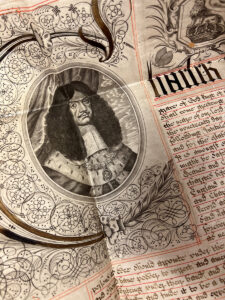 From the Library: 1662 Book of Common Prayer
From the Library: 1662 Book of Common Prayer
By Emma Laws, Exeter Cathedral Librarian
During the Civil War period, Parliament banned the Book of Common Prayer and replaced it with a Directory of Public Worship. From 1645, copies of the Book of Common Prayer were systematically destroyed; Cromwell’s soldiers in the New Model Army were instructed to destroy any copies of the Book of Common Prayer they came across on the basis that “it is high time… to remove this brazen serpent, and grinde it to powder, seeing it is the occasion of so much evil.” (The Souldier’s Catechism, 1645). Indeed, soldiers were given to believe that God had stirred their spirits to be holy instruments of its destruction.
The Book of Common Prayer returned with the restoration of the monarchy. The May 1662 ‘Act for the Uniformity of Publick Prayers and Administrations of Sacraments and other Rites and Ceremonies’ made its use compulsory in church services and all cathedral Deans and Chapters were ordered to procure a ‘true and perfect’ copy.
This splendid copy of the 1662 Book of Common Prayer in the Cathedral Library is bound with its original Letter Patent featuring a portrait of Charles II and his great royal seal. The book is signed and sealed by five Royal Commissioners who, in a statement written on the final page, confirm that they have “Examined and Compared this Book with the Originall and [we] finde it a True and Perfect Copie.”
The Royal Commissioner’s statement is dated 13 December 1662 – “in the fourteenth year of the Raigne of our said Soveraigne Lord King Charles the Second.” In fact, Charles II was only in his second year on the throne but here, as in other places, his reign is backdated to the execution of Charles I in January 1649. The Interregnum never happened.
Join us on our new Uncovering the Civil War: Cathedral and Library tour to discover more treasures from the Civil War era.